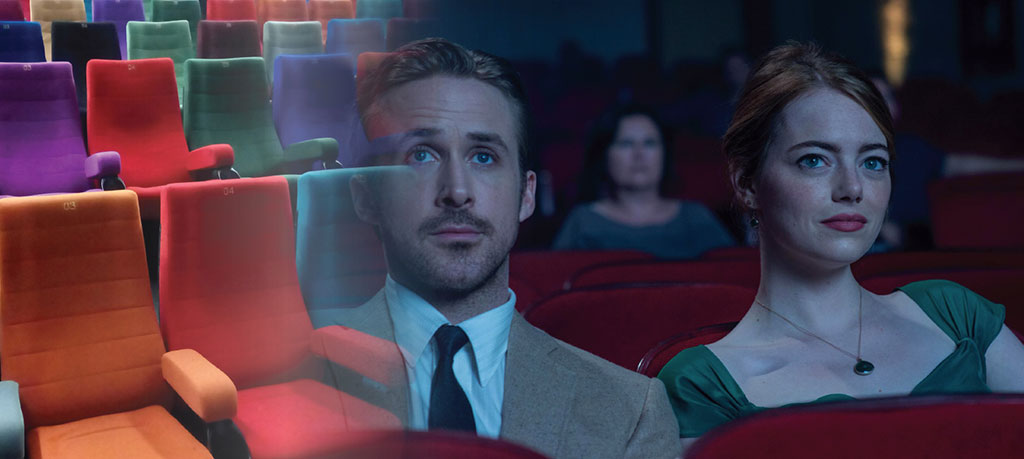
It’s noisy out there. Brands are jostling for space in a marketplace more crowded than ever before. Consumer preferences and the media landscape are changing at pace, all the time. However, in a constantly shifting, unpredictable world, some things remain the same. One is the nostalgic feeling of anticipation when the lights finally go down, the popcorn finally (almost) stops rustling, and the whole room holds its breath before the film starts, write Su Duff & Anna Cremin.
It’s a feeling we’re familiar with from early childhood, going to see our first adventure film; our first romcom; the first time we watch a horror through our fingers. The darkened aisles of the cinema are a magical place.
So how can advertisers harness some of that magic for their brand building? And why is brand building important in the first place?
Brand Building in a Fragmented Media Landscape
With video-on-demand (VOD) services increasing in popularity among younger adults, cinema can sometimes be overlooked as a priority for media planners and buyers. However, for advertisers seeking to shift brand perceptions and drive brand awareness, cinema offers impact, high recall and the potential to elevate positive brand association.
Brand building is about making more space for your brand in a consumer’s mind. It is driven by “broad reach, emotions and associations”, according to prominent marketing effectiveness expert Les Binet, and is achieved through a mixture of long and short-term marketing investment. Brand building is the biggest driver of long-term growth; it uses the creation of “memory structures” that make consumers primed to choose your brand. Without brand building, growth is lessened, and profitability reduced. To maximise on investment return and effectiveness, it’s widely acknowledged that a ratio of 60% to 40% appears to be ideal; 60% long-term investment in brand building and 40% short-term activation for immediate sales uplift. This ratio has been underpinned by studies on market share and profit effect by Binet and Peter Field in 2007 and 2016.
However, being able to build your brand requires audience attention – and attention is a scarce resource these days. With some AV advertising platforms, it’s all too easy for people to skip the ads, and they often do. In addition, where a screen is smaller, viewing tends towards passivity, especially where the percentage coverage of a screen is not at 100%. ‘Visibility is King’ for impact, as attested in Professor Karen Nelson-Field’s recent study ‘Not all Reach is Equal’.
This is where cinema clearly leads in attention terms. In the cinema, even if someone is multi-tasking to turn off their phone, they can’t avoid the ad. It’s a naturally captive audience and for those in the cinema auditorium, visibility and ad completion rates hit 100%.
Opportunity to see (OTS), reach and impressions are increasingly problematic in the attention economy as they become less comparable across platforms. This is especially true of video. A recent international Dentsu Aegis study on attention outlined that effectiveness is closely related to how much of an ad is viewable, and for how long. Meanwhile, Professor Karen Nelson-Field considers the difference between active and passive viewing as well as the effect of clutter when it comes to attention and impact in her aforementioned study. With so much to navigate in the advertising space, there was a requirement to also gain a clearer understanding of how consumers respond to video advertising across different platforms, including cinema.
How Cinema Stacks up against ‘The Social Network’
Pearl & Dean, Wide Eye Media’s sister company in the UK, worked with independent research specialists Mindlab to understand the effect that different media has on viewers. Decisions people make are heavily influenced by factors outside of conscious awareness. In striving to unearth how people actually feel rather than just what they say, Mindlab focuses on measuring gut feelings and intuitive perceptions. The results of their study show the power of traditional media, despite constant debate around the threat of a duopoly.
When it comes to shifting consumer preference from one brand to another, cinema was found to be four times more effective than YouTube advertising, and 15 times more effective than Facebook advertising. Similarly, when driving spontaneous recall, cinema was shown to be six times more effective than YouTube and 11 times more effective than Facebook.
The survey exposed people between the ages of 18-35 to ‘typical’ content for cinema, Facebook and YouTube, including video advertising in a relaxed lounge-style environment and cinema auditorium. In addition, Mindlab tapped into the recipients’ unconscious reactions to brand messaging to determine which medium provided the greatest uplift in brand preference.
Brand preference was calculated using a timed test where participants were shown multiple combinations of paired brand logos and asked to select which of the two brands they preferred. The proportion of times a brand was selected provided a measure of its broad appeal. The results showed consumers in the cinema group to have a higher percentage preference for the advertised brands than those exposed to video advertising in YouTube and Facebook environments.
Striking Gold on the Silver Screen
The results of this study remind us that cinema is an incredible channel for advertisers. So, once a brand has decided to harness the power of the big screen, how can they make the most of this fantastic medium?
Creativity is incredibly important – creatively-awarded campaigns are eight times more efficient according to Field, based on the IPA databank 2008 -2018. And, emotive content extends the experience. The cinema screen is the ultimate medium for showcasing emotion, storytelling and creativity in all its glory. Nothing rivals it in terms of sheer size, scale, drama and pure excitement.
The effectiveness of cinema within the MindLab study is partly explained by the emotional response experienced by respondents when consuming each medium. This was measured by monitoring changes in the skin’s electro-dermal activity, which reveals emotional activation and intensity. The consumers tested revealed a 30% more positive emotional response to video advertising when seen in the cinema than when it was seen in YouTube, and 61% more positive response than Facebook.
(Back to) The Future for Brand Building
Cinema remains a constant in our lives. In Ireland during 2019, high-profile movies are resonating with Irish audiences more than ever. Three of this year’s releases have already made it into the ROI Top 10 highest-grossing films of all time (Avengers: End Game, The Lion King and Toy Story 4). Over in the UK, record admissions were experienced last year, the highest since the 1970s, with a total of 177 million.
Cinemas are the places where great stories are told with impact. Combine this with being one of the only immersive, distraction-free viewing environments we ever experience on a regular basis, and it’s clear cinema is a powerful tool for advertisers hoping to shift brand preference. Now, pass the popcorn and shh… #SeeItHearItFeelIt
Su Duff is marketing & research director at Wide Eye Media. Anna Cremin is head of research & consumer insight at Pearl & Dean.




















